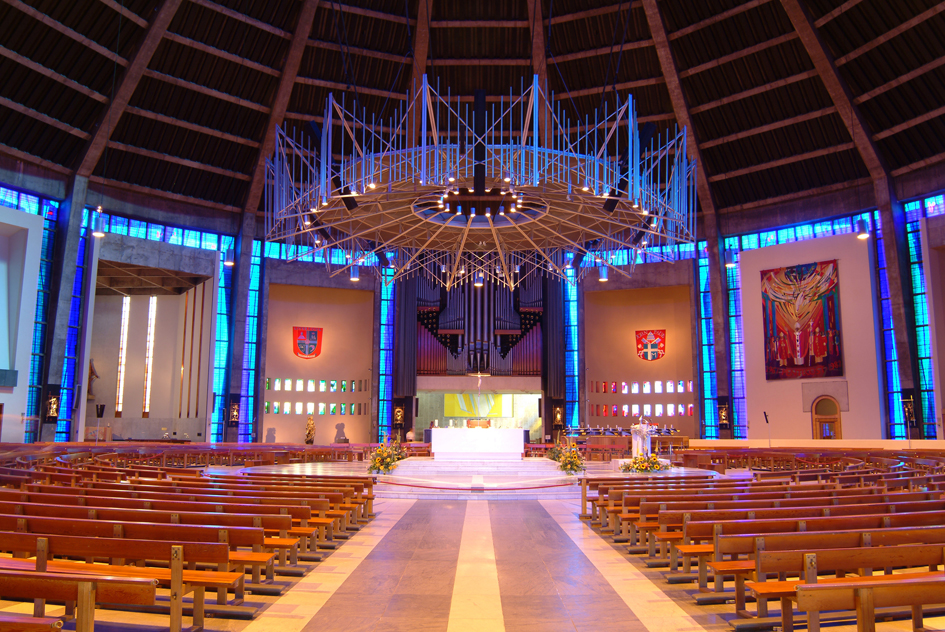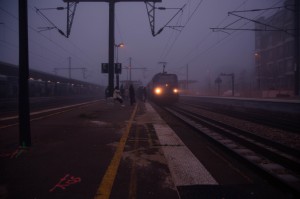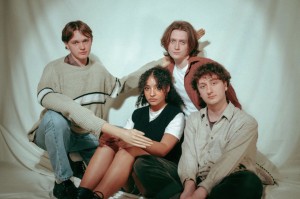Playlist: Musique Concrète — Origins And Legacy

Did you know that the origins of Musique Concrète, or the mixing of recorded sounds, goes back to the 1910s? As one of its key musicians, Pierre Henry, brings a very special performance to Liverpool Metropolitan Cathedral tomorrow, C. James Fagan lifts the lid on the movement’s extraordinary legacy with not one, but two playlists…
We live in a mechanical age. Aurally, technology has thrown up a startling range of noise out into the atmosphere. We have machines which make noise, we have machines to record noise.
The sound artist Max Neuhaus (1939-2009) put forward the notion that the fundamental difference between natural and mechanical sounds is that mechanical sounds stop. As in, the sounds that a coffee machine makes can be turned on, then off. One moment quiet, next clunk, hssssssxit, thunk, silent. I speculate that Neuhaus, and other experimental artists and composers before him, recognised that mechanical objects could be ethereal instruments, on which the song of the 20th century could be played.
But wait; I’ve jumped the gun by mentioning Neuhaus. The idea of using machines and objects to produce music was embraced as early as the 1910s and ’20s, by the Futurists and The Art of Noise. It wouldn’t be until after World War II that the mix of experimentation and technology would have a huge effect upon the Avant Garde and Popular Culture.
Playlist One, above: the key sounds of Musique Concrète
In Post-War France, Pierre Schaeffer (1910-1995) proposed the term “Musique Concrète”, or Concrete Music; conjuring up ideas of solidity, and of things unchanging. We forget that concrete is actually a plastic form while at rest before it sets; concrete’s components can make whatever shape that’s required. Musique Concrète was as equally fluid; with composers like Schaeffer and Pierre Henry (b.1927, whose Liverpool Mass is performed as a live mix on Saturday at the Liverpool Metropolitan Cathedral) taking pre-existing sounds and manipulating them into new forms.
This manipulation was made possible by the development of new recording technologies. At first, shellac records where used to record, and then replay sounds. This was quickly replaced by the arrival of magnetic tape – the startling origin of tape looping and sound collage.
It is also the origin of everyone saying that the Avant Garde invented Hip Hop. Though there maybe no direct connection between the two, they are kin; as anyone who samples uses a turntable to manipulate sounds, and are fundamentally following the same principle. This is basically the use of technology to manipulate one noise into another.
By 1949, the term Musique Concrète was widely accepted and in 1951 received official recognition in the formation of the government backed Groupe Dr Recherche de Musique Concrète. Co-founded with the aforementioned Henry, it attracted the biggest names in contemporary music, including Stockhausen, Pierre Boulez, and Iannis Xenakis. In later years it would produce the electro wizard Jean Michel Jarre.
Playlist Two, above: the legacy of Musique Concrète
It even informed Daphne Oram in the creation of the Radiophonic Workshop. Oram had originally envisioned the workshop as the English counterpart to the GRMC. As these techniques and technologies filtered through, they had a direct and indirect influence on popular music.
And so, you can hear a Musique Concrète approach to sound in the kaleidoscopic production of the Bomb Squad. Or more directly in Enough and Byrne’s My Life In The Bush With Ghosts, and in the jingles created by Delia Derbyshire for the BBC. Even the opening of the Disclosures single Fire, which uses with a phrase edited to enhance its musicality… I’ll stop before including the car horns in Madness’s In My Car.
Would Schaeffer approve? Perhaps not at the content or style of the music. He might have been interested in how many of us now hold an entire recording studio in the hand. This could be considered an aim of Musique Concrète, which was to expand the musical spectrum, and to broaden what could be considered as music.
As Schaeffer put it in his 1952 essay A la recherche d’une musique concrète (In search of real music), writing about his extraordinary composition Symphonie pour un homme seul (Sympathy for one man alone): “a lone man possess considerably more than the twelve notes of the pitched voice. He cries, he whistles, he walks, he thumps his fist, he laughs, he groans.”
Reminding us that something as apparently as intellectual as Musique Concrète is part of an old, human need to communicate our experiences.
C. James Fagan
See Pierre Henry’s Musique Concrète masterpiece, The Liverpool Mass, performed live for the first time on Saturday 13 May 2017, 7.30–10pm, at Liverpool Metropolitan Cathedral — £10/£7
The piece is in celebration of The Bluecoat’s 300th anniversary — Read more here





